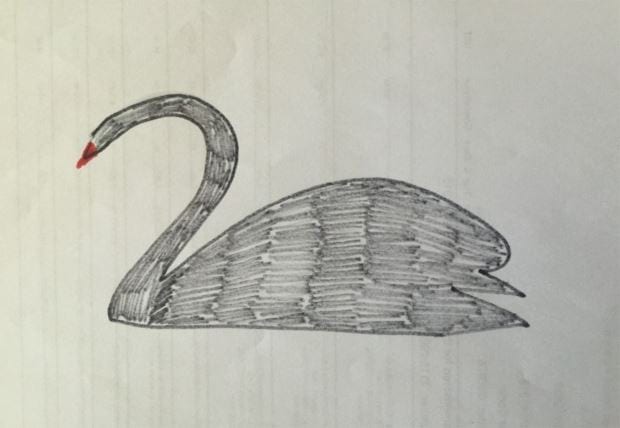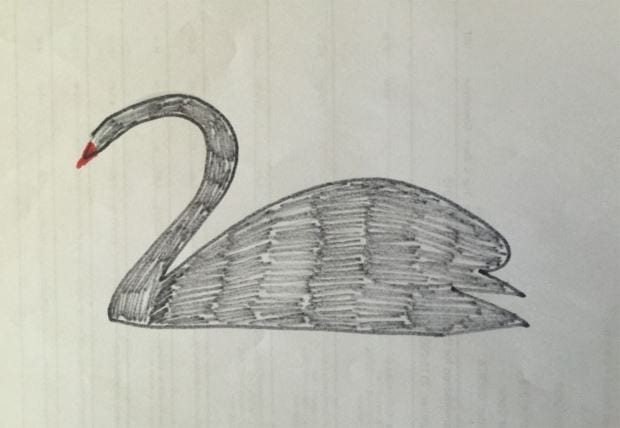
24 Feb Black Swan
Nassim Nicholas Taleb is a mastermind when it comes to deciphering the complexities of the human mind with regards to our rationalities when dealing and interacting in the physical world. Much is explained in a financial context but the underlying principles associated with our personal day to day decision making is found to be based upon illusions of past experiences and interpretations which, to our own demise, may be a far stretch from being rationale. In his book “The Black Swan” he calls it the triplet of opacity and it is summarized as follows;
-
The Illusion of Understanding. This is how everyone thinks he knows what is going on in a world that is more complicated (or random) than they realise.
-
The Retrospective Distortion. This is how we assess matters only after the fact. History seems to have more meaning and be more organized than the empirical reality.
-
The Overvaluation of Factual Information. This is implicit handicap of the authoritative and learned people. The Platonic fold is the explosive boundary where the Platonic mindset enters in contact with the messy reality, where the gap between what you know and what you think you know becomes dangerously wide. This is where, according to Nassim, the Black Swan is produced.

The Black Swan was created on the concept on the unassailable belief in the Old World that all swans were white due to the consistent incontestable observations over the millennia. This was of course before Australia was discovered. It demonstrates the fragility of our universal understanding of our world and the limitations of our minds based on incomplete observations and experience. The Black Swan has since become a familiar cliché’ to resemble chaotic outcomes derived from what should have been sound and predictable order.
Now take a moment to dissect these annotations and apply them into our own personal spheres.
Point (1) the illusion of understanding. There is immediate justification and gratification that decisions are constantly being made within our businesses that have been founded on well researched criteria. Information from multiple data sources compounded with personal experience provides a mosaic of experience to found judgement on. But how well represented are your sources and experience? Oversimplifying the dynamic equation will endurably throw out variables that have not been considered. Some variables may have a positive impact, but it is the downside variables (the tail end risk that may be small in probability but large in impact: the outlier) that is most concerning.
Point (2) the retrospective distortion. Why does it always seem evident in hindsight that certain decisions should have been made, even at times during the crisis cycle, never got made? Justification of the outcomes seems anecdotally clear in retrospect as economic reasoning is reconstructed to fit the justification. These industry experts who apply post mortem logic with technical fanfare seem to continually fail to predict future critical outcomes. In the 1980’s the Australian Wool stockpile reached 4.7million bales after 10 years of regulated policy making. How could it not be forecast that such severe market interference would create Australia’s greatest wool collapse (dropping to a third of its previous trading highs) which decimated the wool industry and primary producers in the early 90’s. Yet it all became so clear in retrospect.
Point (3) the overvaluation of factual information. This is the knowledge gap between perceived intelligence and factual reality that creates ravines for people and businesses to continually fall into. Emotional bias may be a causation to this divide, or purely misinformed judgement relating to point (1). Bridges can be constructed across these knowledge ravines by humble recognition of inherent skill gaps and outsourcing professional services into the business. Or if you are endowed with a curious scientific mindset, then applying deep devotion to upskilling in these areas of deficiency.
How incomplete is the financial puzzle when the systemic impact of risk is embedded into your business due to this incomplete subset of knowledge that is lacking? How many times does a business have to fold and in retrospect certain decisions could have been made to remove the Black Swan event?
We are emotional and physiological beings and because of this we are all victims to potentially creating our own Black Swans in our lives. Besides travelling to new worlds on a course of self-discovery to reduce this elementary risk, think about engaging with people who already have.



Sorry, the comment form is closed at this time.